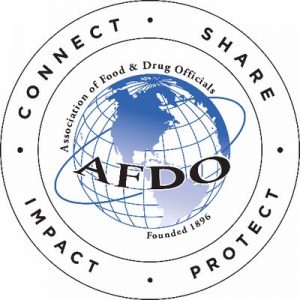Keith Gerein of the Edmonton Journal writes The Meat Shop at Pine Haven, located on a Hutterite colony southeast of Wetaskiwin, announced Wednesday it had temporarily shut down and issued a voluntary recall of a number of its raw and ready-to-eat pork products.
 A full list of the recalled items, including ground pork, chops, sausages, bacon and salami, was available on the Canadian Food Inspection Agency website.
A full list of the recalled items, including ground pork, chops, sausages, bacon and salami, was available on the Canadian Food Inspection Agency website.
The products in question were sold or distributed by the shop between Feb. 19 and April 24, and included pork served by Mama Nita’s Binalot restaurant where the outbreak was first identified a month ago.
“This is our businesses, it’s our livelihood and the food safety of our products to consumers is the highest priority,” facility manager Tim Hofer said. “It’s a very difficult time for us, but we are doing the best we absolutely can to identify the problem, and once we have found it, to mitigate the risks. “
All 36 patients sickened by E. coli O157:H7 have been linked in one way or another to meat from the shop, said Dr. Jasmine Hasselback, medical officer of health, Edmonton zone, for Alberta Health Services.
Hasselback said tracing the bug’s origins proved to be complex and time-consuming, requiring nearly a month of detective work by public health officials.
The initial cluster of five infections was discovered in late March among patrons of the restaurant, but investigators were hampered by the fact the establishment used different meat suppliers. As well, it appeared not all of the infected patients had eaten pork.
“When you are looking at foods people ate at the restaurant, there actually wasn’t a consistent pattern at that time,” Hasselback said. “It wasn’t until we were able to start adding information regarding the individuals who were not linked to the restaurant that pork was able to come a little bit clearer.”
Of the 36 patients identified to date, 21 are believed to have acquired their infection at Mama Nita’s — including several staff. The remaining 15 cases, including the deceased patient, have no connection to the restaurant.
Hasselback said those additional cases gave public health staff more information to work with, but also more variables to consider.
She said investigations of food-borne outbreaks tend to rely on three major avenues of inquiry.
These include interviews with patients to explore what they have eaten and where they have travelled, and lab tests to link the cases of E. coli 0157:H7. As well, investigators gather samples of food that are possibly suspect and have those tested in a lab.
Hofer said his meat facility has supplied products to “dozens” of customers in the Edmonton area — including Mama Nita’s — though he didn’t have an exact number.
 He said the business was informed last Wednesday of a potential connection to the outbreak. When managers learned swabs of certain products had tested positive, along with one swab of the facility itself, the operation was shut down.
He said the business was informed last Wednesday of a potential connection to the outbreak. When managers learned swabs of certain products had tested positive, along with one swab of the facility itself, the operation was shut down.
“The first thing we did was a deep clean of the facility, from ceiling to everything, all scrubbed and sanitized,” Hofer said, adding that a thorough review of the facility’s procedures has begun.
The family-run business has been operation since 2004 and has never before had a contamination issue, he said.
Good luck with the lawyers, who have already filed a $15-million lawsuit against The Meat Shop.
The lawsuit is on behalf of people who suffered damages as a result of buying or consuming pork products that may have been contaminated with E. coli, the law firm of James H. Brown & Associates said.
 This study explores the effect of bed sediment resuspension on Escherichia coli on concentrations in the water column and the persistence of E. coli in the water column and bed sediments of the Yarra River estuary in South‐Eastern Australia. Using sediment cores, we identified that the resuspension of both surficial sediments (e.g., by tidal movements) and deeper bed sediments (e.g., by large storm events) can increase E. coli concentrations in the water column by up to 20 times in estuaries in oceanic climates. Bed sediment resuspension can result in increased E. coli concentrations in the water column even up to 24 days after E. coli first enters the estuarine water.
This study explores the effect of bed sediment resuspension on Escherichia coli on concentrations in the water column and the persistence of E. coli in the water column and bed sediments of the Yarra River estuary in South‐Eastern Australia. Using sediment cores, we identified that the resuspension of both surficial sediments (e.g., by tidal movements) and deeper bed sediments (e.g., by large storm events) can increase E. coli concentrations in the water column by up to 20 times in estuaries in oceanic climates. Bed sediment resuspension can result in increased E. coli concentrations in the water column even up to 24 days after E. coli first enters the estuarine water.








